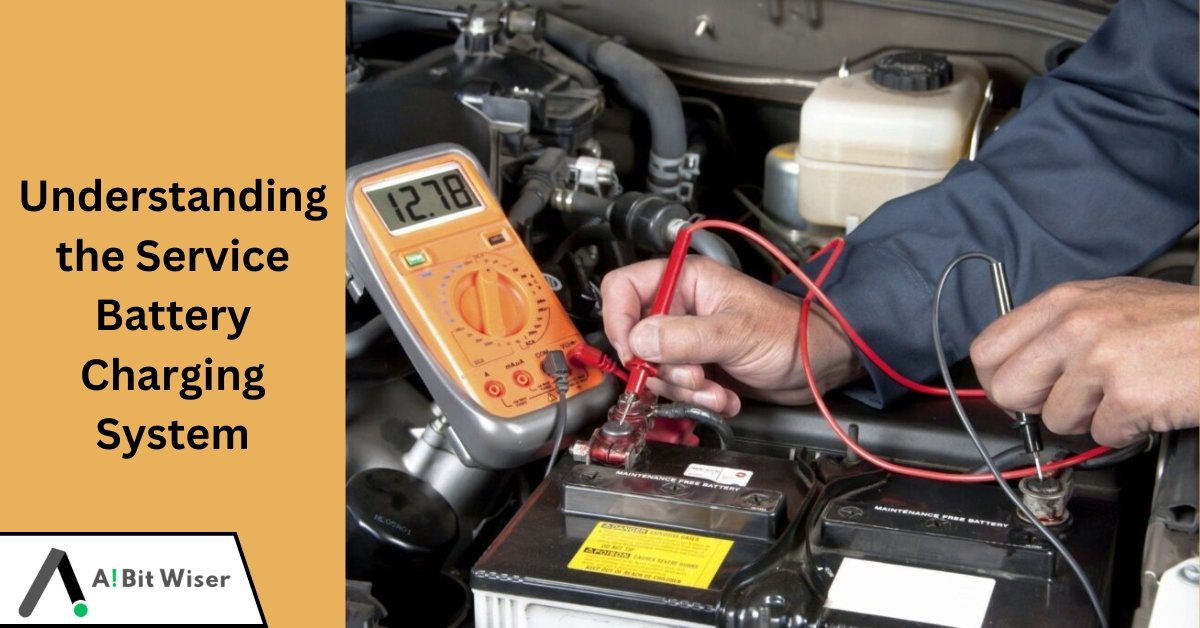Understanding the Service Battery Charging System

The “Service Battery Charging System” warning light on contemporary cars is an essential signal for any problems with the charging system. This system is necessary to keep the battery charged and to supply electricity to different parts of the engine while it is operating.
Components of the Charging System
In conjunction with generating the first spark needed to start the engine and storing energy for use when the engine is not running, the battery serves as an important power source. While the engine continues to spin, the alternator recharges it.
To charge the battery and power the car’s electrical systems, the alternator transforms mechanical energy from the engine into electrical energy. It is powered by a belt that is attached to the crankshaft pulley of the engine.
Common Issues Leading to Warning Lights
When the “Service Battery Charging System” light illuminates, several potential issues may be at play:
- Alternator Malfunction: If the alternator isn’t working properly, the battery cannot get enough charge. This may result in the battery running out of power while you’re driving, which would be quite gradual.
- Battery Degradation: Batteries may become weaker or less able to maintain a charge over time. Age, extremely high or low temperatures, or poor care can all contribute to this.
- Electrical System Faults: The charging system’s overall performance may appear impacted by malfunctioning voltage regulators, blown fuses, or corroded or loose wiring connections that interrupt the passage of power.
Symptoms of a Failing Charging System
Recognizing early signs of a failing charging system can prevent more significant issues:
- Dashboard Warnings: The main signal is the “Service Battery Charging System” light, which is joined by additional symptoms like dimming lights or broken electronics.
- Difficulty Starting: When the car has been sitting still for a long time or in cold conditions, a declining battery may find it difficult to get the engine running.
- Dimming Lights: If the headlights and interior lights seem lighter than usual, there may not be enough electricity available.
Diagnostic and Repair Process
When faced with a “Service Battery Charging System” warning, it is crucial to undertake systematic diagnostics and repairs:
- Visual Inspection: Check the electrical connections and battery terminals for physical damage, corrosion, and tightness first.
- Battery Testing: Check the voltage and conductivity of the battery using a voltmeter. This makes it easier to assess if the battery is maintaining a charge within allowable bounds.
- Alternator Testing: To make sure the alternator’s voltage is producing enough power for refilling the battery, check its output using a voltmeter or have it professionally checked.
- Wiring and Component Inspection: Check the charging system as a whole for any loose connections, broken cables, or faulty parts that could be impairing functionality.
Maintenance and Long-Term Solutions
To maintain a healthy charging system and prevent future issues:
- Regular Maintenance: Make sure to check your alternator and battery according to the manufacturer’s suggested schedules. This include inspecting and changing parts as needed.
- Driving Habits: Occasionally, extend your drive to enable the alternator to fully recharge the battery. Short excursions might not give you enough time to recharge sufficiently.
- Environmental Considerations: Be Considered To reduce vibration damage, protect the battery from high temperatures and make sure it is firmly fastened.
Conclusion
An important early warning system for any problems with your car’s capacity to maintain and charge its battery is the “Service Battery Charging System” warning light. Promptly resolving these problems with appropriate diagnostics and fixes will shield your vehicle’s electrical system from more serious faults and guarantee dependable performance. The longevity and effectiveness of your car’s charging system may be increased with routine maintenance and careful driving practices, which will improve the overall performance and dependability of your car.










